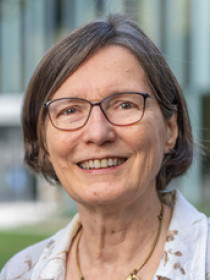
Marybeth Shinn
Connect with Marybeth
About Marybeth
Shinn's research focuses on how to prevent and end homelessness. Shinn was co-principal investigator of the 12-site Family Options experiment examining approaches to ending family homelessness, the evaluator for the initial study of the Pathways Housing First program in New York City, and the developer of a model used by that city to target its homelessness prevention services. Shinn's 2020 book with Jill Khadduri, In the midst of plenty: Homelessness and what to do about it (Wiley), surveys research to show that we know how to end homelessness, if we devote the necessary resources to do so.
Contributions
How to Stop Covid From Exacerbating Homelessness
In the News
Publications
Discusses that based on the enrollment phase of a large 12-site study of housing and service programs for homeless families, there is a mismatch between the programs and the families that they are intended to serve: service programs and how they frequently reject families and families reject service programs that fail to meet their needs.
Shows that even well-run counts of unsheltered homeless people miss many people. Discusses how they planted people masquerading as homeless to see whether counters found them and interviewed unsheltered homeless people at soup kitchens and other programs after the count to determine whether they were somewhere where they could have been counted.
Uses research to answer four questions: who becomes homeless?, what causes homelessness?, how do we end it for people who experience it?, and how do we prevent it? Argues for the central role of affordable housing.
Describes the development of a screening tool New York City uses to target its homelessness prevention services, based on following over 11,000 applicants for services to determine who became homeless. Shows that prevention services make the most difference for people at highest risk of homelessness.
Summarizes the results of the Family Options experiment, which randomized over 2200 homeless families across 12 sites to four housing and service interventions. Shows that long-term rental subsidies not only end homelessness and housing instability but have radiating benefits for other aspects of adult and child well-being at little more than the cost of usual care
Discusses how homelessness is frequently associated with separation of children from their parents. Uses qualitative data from parents' perspectives to understand how hardship and homelessness lead to the break-up of families.